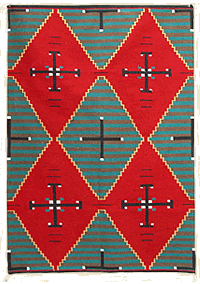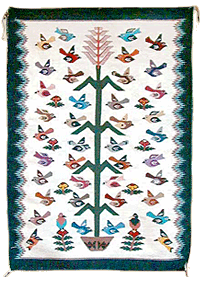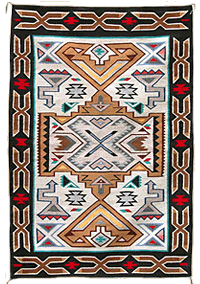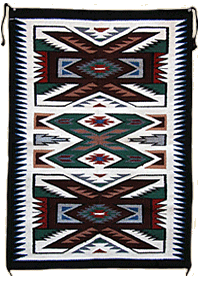| Navajo Rugs | |||
Navajo weavings
shown in Penfield Gallery are contemporary rugs made on the Navajo rugs were traditionally named for the community or region
in which they were woven.
(Information continued below images and artists’ names...please
scroll down to read more.) Penfield Gallery represents several Navajo rug weavers, weaving
rugs in a variety of styles. |
|||
| navajo
rug Artists A - F
|
navajo
rug Artists G - j  |
navajo
rug Artists K - S  |
navajo
rug Artists T - Z  |
Marie Begay |
Pete
Gilmore Annie Henderson Marina Holiday Irene Hollie Betty Joe Evelyn Joe James Joe Lorena Joe Wenora Joe Shirley John Lisa Jones |
Daisy Kee Virginia
March |
Maize
Tapaha |
The Storm pattern rugs were produced mostly in the Western
reservation.
Chief, Moki, Eye Dazzler, and Germantown weavings
are copies of earlier styles that were found The Germantown and Eye Dazzler rugs were a result
of the introduction of commercial dyes Pictorial weavings including sandpainting rugs, and Yeii and Yei
Bicheii rugs have a strong, | |||
New Items | About Penfield Gallery | Portrait Gallery of Artists | News | Share site | Virtual Greeting Cards | Links
2113 Church St NW, Albuquerque, NM 87104 (505) 242-9696 (877) 242-9696 info@penfieldgallery.com

